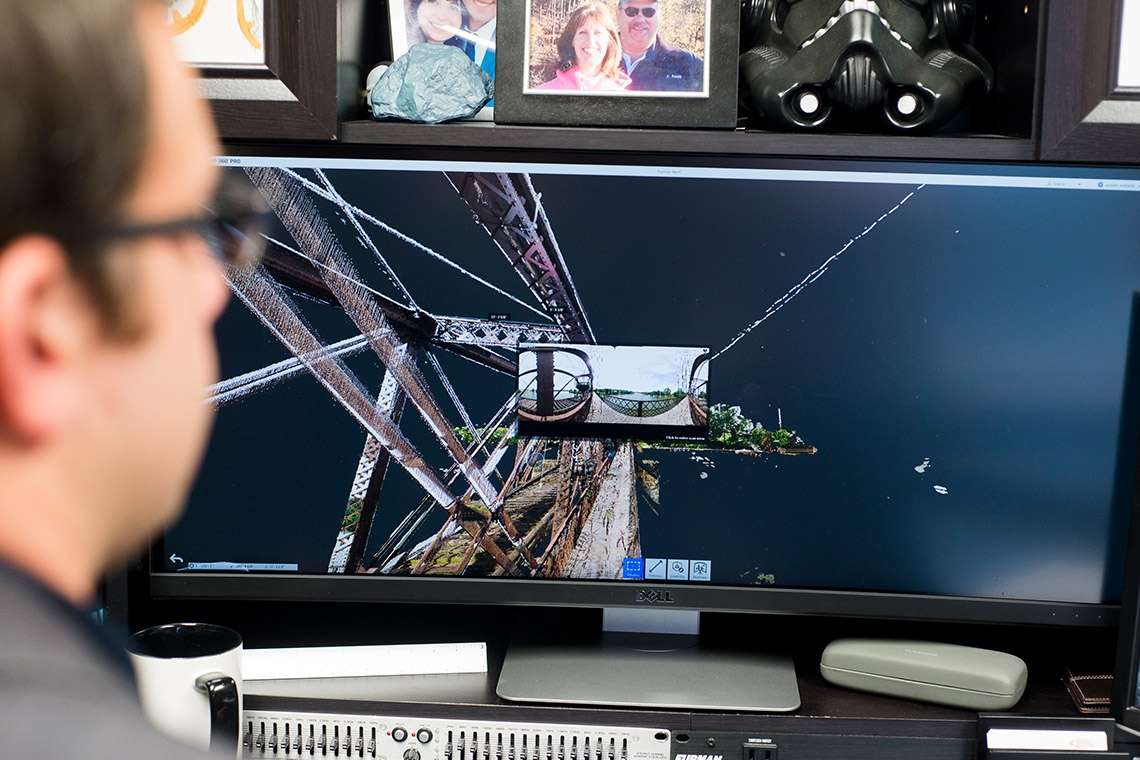The ability to digitally integrate existing conditions into our disciplines’ models early in a project allows rapid communication of complex design constraints. The ways in which we use tools to capture and software to access that data drive how the information may be employed throughout the project. With accelerated project schedules, well documented existing conditions empowers teams to make informed project decisions with minimal impact to schedule. Through proper stewardship of these technologies and workflows, teams achieve higher levels of understanding and interaction with the data captured in modern BIM software. Multidisciplinary data must co-exist with 3D model components in a readily accessible and modifiable manner.
3D scanning is integral to our practice and is highly valuable for capturing large volumes of facility data for multiple disciplines very quickly. Point cloud models allow our designers the freedom to “revisit” the virtual building at their convenience throughout a project’s lifecycle. Workflows that combine design model exports with 3D scan and drone data overlay project designs on existing conditions to assist teams with site interferences and planning. Additionally, drones have become a fast and accurate method of aerial mapping to quickly gather site context without the lead time of traditional methods. Combining 3D scanning and drone technology at Pickering Associates gives our designers a high level of contextual awareness very early in the project lifecycle.
Traditional 2D workflows for design take incredible amounts of time and experience to coordinate among complex teams. Building Information Models accelerate team communication through intelligent, interactive, and multidisciplinary data paths. 3D design software packages such as ReCap, Civil 3D, Revit and Plant 3D integrate existing site and project data to quickly move into design. Composite model review tools such as Navisworks empower design teams to visually track the development of scope items. Combining coordination and visual communication tools helps to ensure accurate interpretation of data to all project teammates. Assigning detailed attributes to 3D components through BIM authoring software makes rendering software and virtual reality (VR) simulations readily accessible.
Contemporary data capture and model review workflows offer the highest leverage potential at project startup. The evolving hardware and software combinations provide more effective ways to document, access, analyze, and communicate information throughout design exercises. Each year software and hardware improvements put more powerful tools at every designer’s fingertips and are critical to engaging design teams early in the project.

